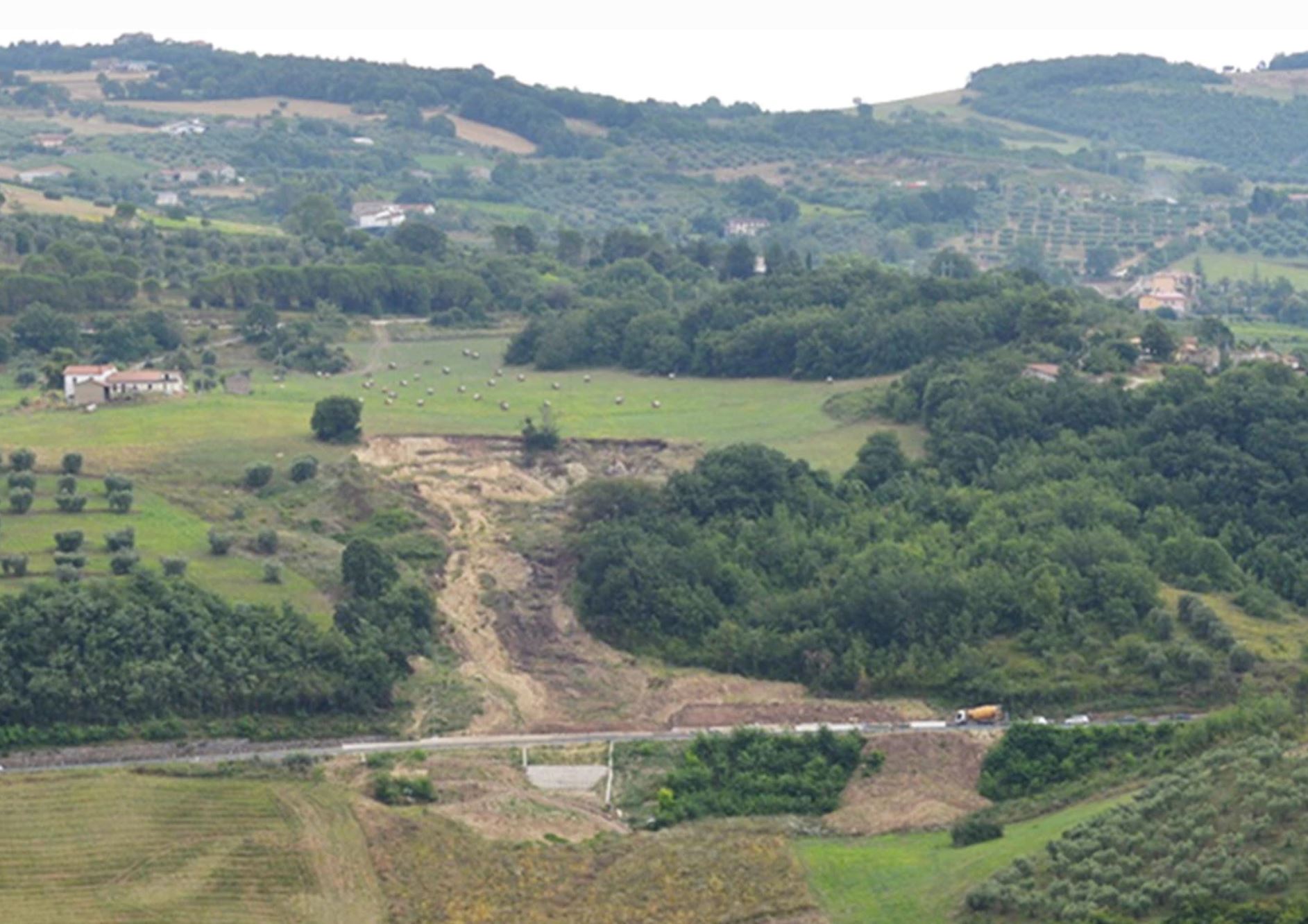21 May 2021
The Pietrafitta landslide: can traffic vibration cause a landslide to move?
Posted by Dave Petley
The Pietrafitta landslide: can traffic vibration cause a landslide to move?
Over the years I have frequently heard discussions about the triggers for landslide movement. Many of these are obvious – rainfall, seismic shaking, snowmelt, construction, for example. Sometimes people have also described vibration from traffic or trains as being a potential trigger. I have always wondered how strong the evidence is to support this assertion.
There is an interesting paper in the journal Landslides (Guerriero et al. 2021) that has investigated this for a clay landslide in Italy. The site, the Pietrafitta landslide in southern Italy, is located alongside an important road, SS87. In 2016 movement of the landslide was causing periodic closure of the road to traffic. The authors have included this image of the landslide:-

The Pietrafitta landslide. Image from Guerriero et al. (2021).
.
This is probably best described as a retrogressive earthflow. The scale of the landslide is indicated by the truck located on the right side of the landslide toe.
The authors installed a broadband seismic station to measure the traffic vibration and an extensometer to measure landslide movement. In the period of the study traffic flow on the road occurred for only a part of the day, giving a period of no traffic vibrations to compare with a period in which traffic was occurring.
The graph below shows the startling results:

Traffic vibrations and displacement of the Pietrafitta landslide. Image from Guerriero et al. (2021).
.
When the road was closed (the dark grey periods) no traffic vibrations were recorded. Movement of the landslide typically slowed and stopped. In the period in which traffic was flowing (the light grey periods) the landslide commenced movement, with a period of acceleration. After the traffic ceased the landslide continued to move for some hours before slowing and eventually stopping.
Guerriero et al. (2021) hypothesise that the landslide was probably on the very margin of instability in its natural state (i.e. the factor of safety was very close to one). The traffic vibration generated higher pore water pressures on the shear surface, which were enough to lower the factor of safety below one, allowing movement to start. Once the traffic ceased the higher pore water pressures took a few hours to dissipate, such that the landslide continued to move for a while, but then stopped.
The conditions in the Pietrafitta landslide are perhaps unusual, being both fully weakened and marginally stable. I’m reminded of the Slumgullion landslide (also an earthflow), which moves in response to atmospheric tides. But Guerriero et al. (2021) have demonstrated that landslides can indeed move in response to traffic vibrations.
.
Reference
Guerriero, L., Ruzza, G., Maresca, R. et al. 2021. Clay landslide movement triggered by artificial vibrations: new insights from monitoring data. Landslides. https://doi.org/10.1007/s10346-021-01685-7


 Dave Petley is the Vice-Chancellor of the University of Hull in the United Kingdom. His blog provides commentary and analysis of landslide events occurring worldwide, including the landslides themselves, latest research, and conferences and meetings.
Dave Petley is the Vice-Chancellor of the University of Hull in the United Kingdom. His blog provides commentary and analysis of landslide events occurring worldwide, including the landslides themselves, latest research, and conferences and meetings.
Suggests that most landforms are NOT stable…..but in equilibrium !